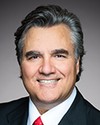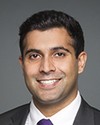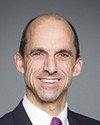Thank you, Madam Chair and members of the committee, for the invitation to speak with you today.
My name is Jared Mikoch-Gerke, and I'm an aviation security adviser for WestJet. In my capacity, I serve as a subject matter expert on all legislation and regulatory policy surrounding aviation security across our global network, and I'm the primary liaison with CATSA in its current form.
I represent WestJet on several Transport Canada-led working groups and committees related to the reform and development of aviation security policy. I also serve as the chair of the security and facilitation committee of the National Airlines Council of Canada.
WestJet is in the midst of a significant evolution, from the carrier that launched in 1996 with only three aircraft and served five destinations in western Canada, to today, when we operate over 700 flights a day. We have a fleet of 180 aircraft that carry nearly 80,000 guests daily throughout our growing international network.
We are the second-largest air carrier in Canada, and the safety and security of our guests is at the absolute core of what we do. For this reason, we are passionate about the subject at hand.
In 2017, when Transport Canada first announced that it would examine new business and governance models for CATSA, I represented WestJet and NACC on the Transport Canada-led security screening working group with our airport colleagues.
Throughout 2017, we reviewed and assessed four different options, one of which was transitioning CATSA back to a non-profit, non-share capital corporation and establishing it in a similar framework to Nav Canada. Our analysis of the different models was based on seven principles, which can be broken down further to three main elements:
First, security must never be compromised. Screening must be effective and responsive to new threats while capable of delivering internationally competitive screening standards with 95% of all passengers screened in 10 minutes or less and none waiting longer than 20 minutes.
Second, the entity must practise the highest standards of corporate governance and public accountability, ensuring the availability of services is not a barrier to investment, operations or growth.
Third, consistent funding is required over a multi-year period to support capital investment innovation in a consistent national standard, along with a fully funded transition period to ensure there are no sharp cost increases on passengers or industry.
At the outset, we supported the development of a new non-profit corporation similar to Nav Canada, with some important caveats. While we continue to support this in an ideological sense, we have several concerns that we believe are important for this committee to consider and understand.
Upon review of this bill, and when relating it to the enacting legislation for Nav Canada, there are several differences that need to be acknowledged. As we know, CATSA was created in the aftermath of September 11, an event that drastically changed air travel as we know it. Additionally, there were other events that also drove significant changes to aviation security screening.
We had the underwear bomber plot, which resulted in the liquids and gels screening we have today, the shoe bomber plot, which resulted in the requirement to remove shoes for screening, and others, which have changed security screening over the years.
These events resulted in almost immediate changes to screening requirements to ensure the safety of passengers while instilling public confidence. They often come with significant costs. It is critically important for the entity to be agile and responsive to new threats; however, to do so also requires financial guarantees.
We understand the requirement for the entity to implement any directions issued, or to provide screening at aerodromes designated by order of the minister. However, we firmly believe that, like Nav Canada, there should be financial protections in place from the government should the changes result in a financial loss to the entity, either by means of financial compensation or the establishment of a contingency fund.
As we know, aviation security is incredibly susceptible to significant external shocks and we must ensure that the entity is financially stable to sustain such events. There are also several other elements that we do not have any insight into, but are crucial to the success of this new entity.
With respect to the assets and equipment currently owned by CATSA, we maintain the firm belief that these assets should be transferred at a nominal value since they have been paid for by Canadians through the air travellers security charge, or ATSC. By transferring the assets at book value, the costs are going to be passed on to consumers, who will pay for them again.
With respect to the ATSC, we believe this tax should be repealed once charges are established by this entity, but there is no clarity on what will occur with it. Maintaining the ATSC alongside the new charges will only drive up the cost of air travel for our guests who must pay for these services.
The legislation also does not provide any detail on how the transfer of current employees is to be carried out. There is nothing specifying how to deal with current collective agreements, bargaining agents or obligations to provide services in the event of a work stoppage. There are no commitments on pension liabilities or severance pay. For this entity to be successful, we believe these elements need to be carefully considered and evaluated.
In conclusion, we want to acknowledge that CATSA has served its role as best it could. However, the point of failure has been that all funds generated by the ATSC have flowed into general revenue without proper appropriations back to CATSA—while generating a windfall of nearly $650 million to the government between 2010 and 2017.
While we are encouraged by the capability of the entity to set its own charges for multiple years, we are concerned about some unknowns that exist, which will determine the true cost for this transfer to the industry and the travelling public. These elements need detailed consideration that must not be rushed, as is proposed. Rather, we must work with our industry colleagues and government to ensure that the negotiation of this transition is approached in a methodical and calculated manner. This will guarantee that the result is an entity best established to serve the industry and travelling public with internationally competitive costs and service delivery levels.
Thank you for your time.








